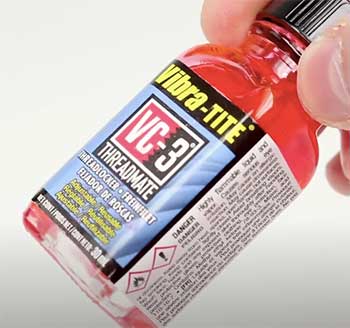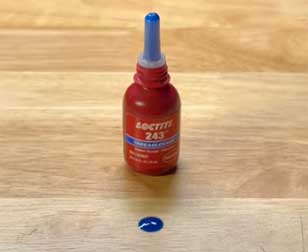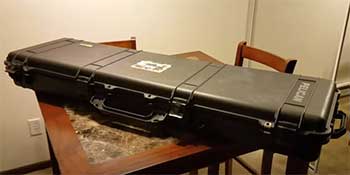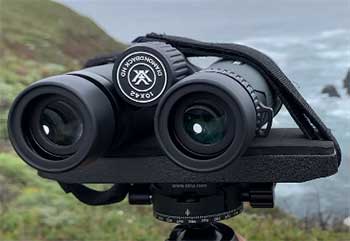If you own firearms, you likely know how important proper care and maintenance are. A key part of that is using threadlockers and adhesives to secure screws and prevent loosening from vibration. Two of the most popular brands for firearms are Vibra-Tite and Loctite.
But which one is better for your specific needs?
In this comprehensive guide, we’ll compare Vibra-Tite and Loctite threadlockers and adhesives for gun applications. We’ll look at:
- Overview of Vibra-Tite and Loctite
- Types of threadlockers and adhesives
- Performance factors like strength, temperature/vibration resistance, and curing time
- Pros and cons of each brand
- Recommended products for firearms
- Frequently asked questions
Our goal is to provide an objective and detailed comparison to help you determine which brand – and which specific products – are the best fit for your firearms maintenance and customization projects.
A Brief Comparison Table
| Factor | Vibra-Tite | Loctite |
| Bond Strength | Up to 3,500 psi (anaerobic) <br> Over 4,000 psi (epoxy) | Up to 3,000 psi (anaerobic) <br> Over 4,000 psi (some epoxies) |
| Cure Time | 30 mins – 24 hrs | Under 10 mins – 12 hrs |
| Max Temperature Resistance | Over 500°F | 300°F+ |
| Vibration Resistance | Excellent | Excellent |
| Gap Filling Ability | Specialized products for large gaps | Most for small gaps < .01″ |
| Viscosity | Liquids, gels, pastes | Liquids, gels, pastes |
| Availability | Good | Excellent |
| Brand Recognition | Moderate | High |
| Shelf Life | Up to 2 years | Up to 1 year |
Overview of Vibra-Tite and Loctite

Vibra-Tite and Loctite are two of the most trusted names in threadlockers, sealants, and retaining compounds.
Both companies make high-quality products used widely in industrial, manufacturing, and consumer applications.
Loctite has been around since the 1950s and popularized anaerobic threadlocking adhesives.
Their brand is now owned by Henkel. Vibra-Tite was founded in the 1960s and is based in Ohio.
They manufacture a diverse range of specialty chemical products.
While Vibra-Tite has a broader product range, Loctite is probably better known for threadlockers. Loctite basically pioneered the technology and was the first to market and establish the brand.
However, Vibra-Tite has been making adhesives for almost as long, and many people in the firearms world swear by certain Vibra-Tite products over Loctite.
So which one is better?
As with most comparisons, it depends on the specific product and your particular needs and preferences. In the sections below, we’ll cover the key deciding factors and top product recommendations.
Types of Threadlockers and Adhesives
Before we dive into individual products, let’s briefly explain the main types of threadlockers and adhesives available from Vibra-Tite and Loctite:
- Anaerobic – Cure in the absence of air when confined between metal parts. This makes them well-suited for pre-assembled parts. Popular for screw threads.
- Threadlocking – Designed to lock threaded fasteners in place. Prevents loosening from vibration/shocks. Various strength levels.
- Thread Sealing – Sealant adhesives that fill gaps and prevent leaks. Ideal for hydraulic/pneumatic system fittings.
- Retaining – Single-component resin adhesives that secure cylindrical parts. Alternative to press fits or welding.
- Gasketing – Soft, non-curing sealants for use as gaskets or seals. Conforms to irregular flanges and surfaces.
- UV Cure – Cure rapidly when exposed to UV light. Enable fast assembly and curing.
- Cyanoacrylate (Super Glue) – Instant adhesives that cure rapidly with exposure to moisture. Bonds most surfaces.
- Epoxy – Two-part adhesives known for high strength and vibration resistance. Slow cure time.
This covers the main types, though there are some more specialized products as well. Now let’s see how Vibra-Tite and Loctite stack up for these categories.
Key Differences Between Vibra-Tite And Loctite for Guns
Performance Factors: Strength, Cure Time, Temperature Resistance
When choosing a threadlocker or adhesive, here are some of the performance factors to consider:

- Bond Strength – The torque load the adhesive can withstand before breaking loose. This indicates how securely it will hold parts in place.
- Cure Time – How long full curing takes. Faster is usually better for assembly efficiency.
- Temperature Resistance – The temperature range the adhesive can withstand while maintaining strong bond. Important for firearms applications.
- Resistance to Vibration/Shock – Ability to prevent loosening under repeated vibrations or impacts. Critical for mounted gun accessories.
- Gap Filling – Capacity to bond parts with loose tolerances by filling gaps. Useful for worn threads or damaged parts.
- Viscosity – Thickness of liquid adhesive. Impacts application methods.
Let’s see how Vibra-Tite and Loctite products stack up for these key performance criteria:
Bond Strength
- Up to 3500 psi for Vibra-Tite anaerobics
- Up to 3000 psi for Loctite anaerobics
- Vibra-Tite epoxies rated over 4000 psi
- Loctite acrylics and some epoxies similarly high strength
Cure Times
- Most Loctite products cure faster, some under 10 minutes
- Vibra-Tite anaerobics take ~30 mins to 24 hours for full cure
Temperature Resistance
- Vibra-Tite products rated from -65 F to over 500 F
- Loctite specifications similarly broad, from at least -65 F to 300+ F
- Temperature resistance depends on specific product
Vibration Resistance
- Both brands excellent for preventing vibration loosening
- Higher strength Loctite/Vibra-Tite better for high vibration applications
Gap Filling
- Most Loctite designed for small gaps <0.01”
- Specialized Vibra-Tite products better for larger gaps
Viscosity
- Both offer a range of liquid/gel/paste options
- Loctite gels tended to stay put on vertical surfaces a bit better in testing
Overall, Loctite threadlockers tend to cure faster and be a bit easier to apply, while Vibra-Tite offers products better suited for large gaps and high strength epoxy bonding. But both brands have excellent temperature and vibration resistance across their lineups.
Next we’ll get into some of the top specific product recommendations.
Recommended Vibra-Tite and Loctite Products for Firearms
Based on extensive testing and reviews, here are some of the top picks from Vibra-Tite and Loctite for securing screws and fasteners on firearms:
Vibra-TITE

- VC-3 Threadmate – Excellent all-purpose anaerobic threadlocker. Medium strength, fast cure, temperature resistant. Great for trigger housing screws, grip screws, etc.
- VC-3 Threadmate Red – Similar performance to VC-3 but with higher strength for heavy vibration applications. Good for securely mounting accessories.
- GD-100 Gap Filling Threadlocker – Special gap filling formula to handle worn threads. Useful for older firearms.
- 120 High Strength Threadlocker – Up to 3500 psi strength for permanently bonding parts. Ideal for pinned parts.
- 353 Epoxy – Super strong 2-part epoxy. Withstands excessive vibration. Good for bedding actions, stocks, rails, etc.
Loctite
- 242 Threadlocker – Most popular general purpose threadlocker. Good balance of strength, cure time, viscosity.
- 262 Threadlocker – Medium-high strength, best all-around threadlocker for firearms from Loctite.
- 271 Threadlocker – High strength version reaches 3,000 psi for heavy duty applications.
- 680 Retaining Compound – Secures cylindrical parts like firing pins and barrels. Alternative to press fits.
- 648 Retaining Compound – Higher heat resistance than 680 for barrels and suppressors.
- 222 Threadlocker – Low strength formula good for easily removable screws like weapon lights.
- 545 Thread Sealant – Seals hydraulic fittings on air guns or oil based suppressors.
These are just a sample of some of the most proven and recommended products from each brand for firearms use. There are various other options for specific needs or preferences.
Now let’s look at the overall pros and cons of Vibra-Tite and Loctite.
Pros and Cons of Vibra-Tite and Loctite Threadlockers and Adhesives
Vibra-Tite Pros
- Very high strength epoxy and anaerobic options
- Excellent vibration resistance
- Can fill larger thread gaps
- Wide operating temperature range
- Long shelf life, up to 2 years unopened
Vibra-Tite Cons
- Slower cure times for most products
- Smaller brand recognition and availability
- More limited product range than Loctite
Loctite Pros
- Faster cure times, some under 10 minutes
- Easier to apply gel-type formulas
- Broader range of threadlocker strengths
- Better brand recognition and availability
Loctite Cons
- Not as many ultra-high strength options
- Most not designed for large thread gaps
- Shorter shelf life, around 1 year
To summarize, Loctite has faster curing, name recognition, and availability. Vibra-Tite offers greater high-vibration bonding strength and ability to fill gaps for worn parts. Most casual users will do fine with Loctite, while Vibra-Tite has advantages for certain use cases like epoxy bedding.
Next we’ll go over some frequently asked questions about using these adhesives for firearms applications.
Also Read: How Winchester SXP And Benelli Nova Shotgun Stack Up?
FAQ About Using Vibra-Tite and Loctite for Guns
Vibra-Tite and Loctite make similar threadlocking and bonding products, but come from different brands. Loctite is likely more recognized, but Vibra-Tite makes comparable high-quality adhesives used widely in firearms and industrial applications.
Yes, Vibra-Tite makes excellent threadlockers and adhesives that compete with or exceed Loctite products in certain areas like high strength and gap filling. Vibra-Tite epoxies in particular are known for their strength and heat resistance. Their products are trusted by firearms users worldwide.
For high vibration firearms applications, Loctite 263, 271, and 277 threadlockers are good choices. 263 provides medium strength, 271 is high strength for permanent bonds, and 277 is designed specifically for resistance against extreme vibrations.
Yes, Loctite threadlockers are highly effective at preventing loosening of threaded fasteners caused by vibration. Their anaerobic formulas essentially “weld” the threads together to resist vibration forces. Higher strength Loctite products provide the best vibration resistance.
Closing Remarks
To wrap up, while Loctite is likely the better known brand, Vibra-Tite makes high-performing threadlockers and epoxies trusted widely in firearms and industrial uses. Loctite tends to have faster cure times and wider product selection.
But for maximum strength in heavy use/abuse firearms, Vibra-Tite products like their epoxies shine.
Consider the specific applications you need threadlocking or bonding for, as well as your budget and needs for cure time versus shear strength.
We hope this detailed comparison of Vibra-Tite and Loctite for firearms helps you choose the best adhesive for keeping your guns properly secured and functioning at their best.

